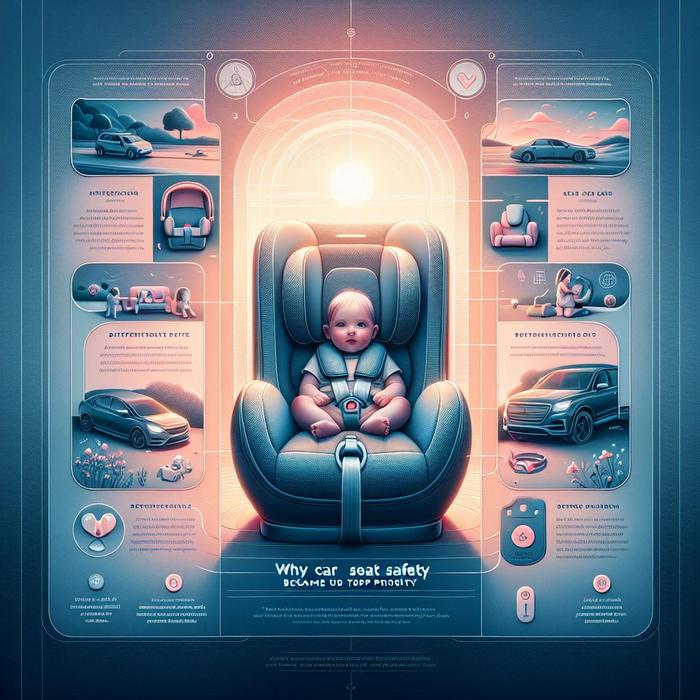Understanding Car Seat Safety
When it comes to our children, their safety is always a top priority. One area that often gets overlooked is car seat safety. Proper installation and choosing the correct car seat can make a significant difference in protecting our little ones on the road. Below, we share some important car seat safety tips, based on our personal journey of keeping our baby safe.
Choosing the Right Car Seat
Choosing the right car seat is an integral part of car seat safety. It’s not just about picking the one with the most appealing color or design; it’s about finding the one that provides optimal safety and comfort for your child. There are several types of car seats, each designed for a specific stage of your child’s growth. Safekids.org provides a comprehensive guide that you might find helpful. Make sure to consider the following aspects:
- Age and size: Children grow at different rates, and what works for one child may not work for another. Ensure the car seat is suitable for your child’s age, weight, and height.
- Fit: Check if the car seat fits well in your vehicle. Not all car seats fit in all cars, so it’s important to test this before making a purchase.
- Ease of use: A complicated car seat can lead to improper use, which could put your child at risk. Choose something that is easy to install and adjust.
Proper Installation is Key
Even the safest car seat on the market won’t live up to its promise if it’s not installed correctly. A car seat that’s not properly secured can easily become a projectile in the event of a crash, and too often, this proves disastrous. According to the Car Seat Lady, nearly 73% of car seats are improperly installed. Here’s how to avoid being part of that statistic:
- Read the manual: Every car seat comes with a manual that provides detailed installation instructions. Take the time to read and understand this guide.
- Check the angle: Maintaining a proper angle can help protect a child’s airway, especially for newborns. Most car seats come with an angle indicator.
- Secure tightly: The car seat shouldn’t move more than one inch from side to side or front to back when tugged at the seat belt path.
- Seek professional help if needed: If you’re unsure about the installation, seek help from a certified child passenger safety technician. Use this resource to find one near you.
The Importance of Reassessment and Reinstallation
Just as your child is continually growing and changing, so too are their car seat needs. Like fostering a positive outlook in our toddlers through biomimetic feeding or encouraging their physical development through various activities, maintaining their safety on the road requires regular updates and upgrades.
Keeping Up With Advancements in Car Seat Safety
Just like innovative designs in baby toys and toilets, car seats undergo regular upgrades too. Manufacturers constantly innovate to ensure child passenger safety. As parents, staying updated with these advancements in technology becomes mandatory. You can sift through various car seat safety tips on NHTSA website, which offers crucial advice for making safe travel choices.
Upgrading Your Car Seat
Transitioning to a higher-stage car seat isn’t only about your child outgrowing their current seat. It’s essentially about their developing body requiring different types of support as they grow. According to HealthyChildren.org, a resource provided by the American Academy of Pediatrics, children should stick to infant-only seats until they reach the manufacturer’s weight or height limit, usually around age two. Once they achieve growth milestones, they can move to forward-facing seats.
Retiring Old or Damaged Seats
Car seats are not heirlooms or collectibles. If they are damaged, expired, or recalled, it’s time to retire them. The plastics used in car seats have a lifespan and can weaken over time. A damaged or expired car seat may not provide adequate protection in the event of a crash. Additionally, older models might not meet current safety standards set by NHTSA. It’s advisable to check the expiry date or manufacturing date usually imprinted at the bottom or side of the seat.
Reiterating the Basics: Harnessing and Positioning
Safe car ride does not end with a proper seat and proper installation. You should also explore how to harness your child correctly. The chest clip should rest at armpit level, and the harness should be snug, with no room to pinch any slack at your child’s shoulders.
In addition to this, correct car seat positioning is equally vital. The back seat is the safest place for children. The Cleveland Clinic suggests that children aged 12 and under should be seated in the rear seats to avoid injury from front-seat airbags in case of a crash.
Maintaining Your Child’s Comfort
Ensuring our child’s comfort in their seat can contribute significantly to their willingness to stay in it. An uncomfortable child is likely to resist the harness, leading to frequent adjustments and distractions while you are driving. Consider these points while assessing comfort:
- Padded seat and straps: Padded seats and straps can provide more comfort for your child during a ride.
- Adjustable recline: Seats offering a recline option can be more comfortable for sleeping children, especially during longer rides.
- Side-impact protection: This is another added advantage that can elevate the comfort level of your child’s car seat.
Final Word
Car seat safety is as important as buckling up yourself. It’s about safeguarding your child’s present and future. Always prioritize safety features over cosmetic ones. Here, Safe kids worldwide can be your trusted guide in making an informed decision. Remember, using a car seat is not a parenting choice, but an obligation guided by law. Choose wisely and drive safely.

